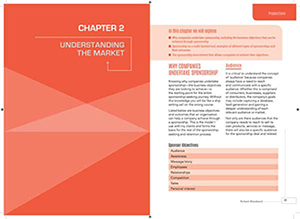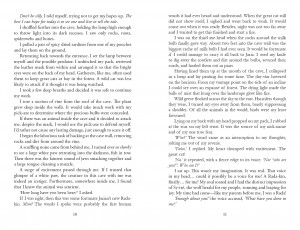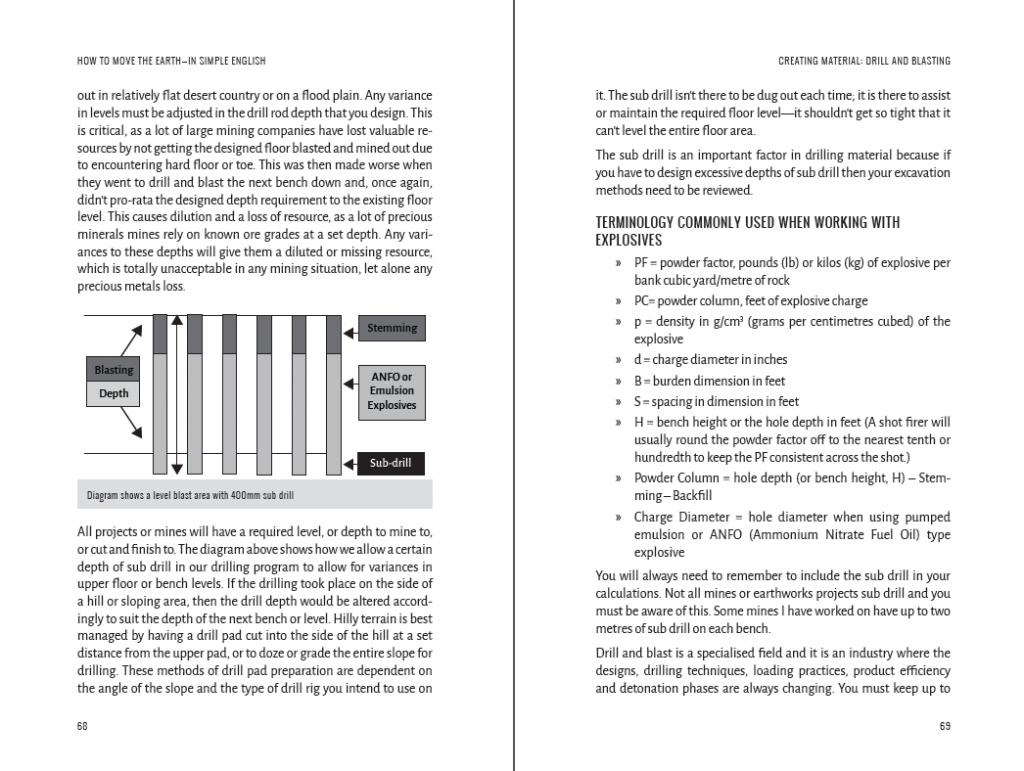What’s involved in designing a book for print?
 In a nutshell, somebody will be taking your Microsoft Word document and putting it in a form that a printer will accept on the page size you have chosen.
In a nutshell, somebody will be taking your Microsoft Word document and putting it in a form that a printer will accept on the page size you have chosen.
Printers require PDF files that are ‘print-ready’, but that does not mean your Word doc printed to PDF will do the trick. Your book PDF will need to be set up in the right specifications for your printer. The printing specifications vary from printer to printer, and also depend on your book design, but most printers require the layout PDF to be in single pages (not spreads) in the final page size with no bleed. All content should be vector except for photos or shaded artwork, which should be 300dpi.
That’s all a printer requires, but there are best-practice standards that should be applied if you want your book to look any good and be easy to read. Even though a printer might not require them, a book publisher would, and there are good reasons for it. If you are self-publishing you are your own publisher, so now is the time to start behaving like one. Why? Readers will spot a self-published-looking book easily from a poor cover design or shoddy interior book layout.

You want your manuscript to turn out looking like a book, don’t you? Poor book design workflows have a high chance of disappointing you. All sorts of things can go wrong, including the use of unattractive fonts and hyphenation; text being too close to the trim edge or disappearing into the inside (gutter) of the book; fuzzy low res (pixelated) images being printed; inconsistent or wrong fonts on headings, pull quotes, body text or other kinds of text. There can also be formatting problems that are so bad it’s hard to read the book (e.g. text that is too small) or the content can be broken up or unsightly, just to name a few.
We have several typesetters in our employ, and we would not recommend going anywhere else because we have such a good workflow. We also offer that often hard-to-find feature in self-publishing which is customer service. If you’d rather not do it all yourself, you’re in the right place. PublishMyBook.Online are experts at book design and project management.
Book design best-practice standards
 There are plenty of choices to make when designing a book for print. First and foremost, these decisions need to be made with the user experience front-of-mind and with the intention of publishing the book to the highest standard possible. We call the process of working this out ‘design conceptualisation’. Most books should be designed in Adobe InDesign, which is software specially designed for books. To name a few of its thousands of features, InDesign will manage left and right pages, headers and footers, chapters, table of contents, hyperlinks, margins and printing output specifications.
There are plenty of choices to make when designing a book for print. First and foremost, these decisions need to be made with the user experience front-of-mind and with the intention of publishing the book to the highest standard possible. We call the process of working this out ‘design conceptualisation’. Most books should be designed in Adobe InDesign, which is software specially designed for books. To name a few of its thousands of features, InDesign will manage left and right pages, headers and footers, chapters, table of contents, hyperlinks, margins and printing output specifications.
Designing a book for print is about much more than just choosing a nice font and implementing formatting. It is also about considering the page size, margins and spacing (between every element on the page). For example, for novels, extra space should be allowed for the inside margin vs the outside because of the fold of the book. It is also about paper type, spine width and cover design, the sales material, and the finer details of the front and back matter, including page numbers. Did you know that in books, page numbering only needs to be on the body of the book, not the front or back matter?
While it may be tempting to try to tackle book layout yourself, you risk putting your book at a huge disadvantage when it comes to marketing and selling if you fail to do these well. The self-publishing market is a huge industry, and the choices you make in designing your book for print will determine the book’s success or failure. See Is my own layout in Microsoft Word good enough to print as a book?
Please consider employing our design experts to assist you with this crucial part of your publishing project.
PMBO’s design team develop the book design, book set-up, and the front and back matter. The team formats your book and considers colours, fonts, spacing—between lines, letters and paragraphs; paragraphing, alignment, the design of lists and tables, headings, pull quotes and quote marks, indentation, formatting chapter beginnings, divider lines, graphics, images and captions. They design the images, they proof the print layout, they prepare the book to print specifications, and they complete test prints to ensure the typeset size and positions work. Once they’ve completed these tasks, the book is typeset for print.
 To give you an idea of how much work goes into this, we can pull out ‘proof the print layout’ from the above paragraph and let you know exactly what this means just by itself.
To give you an idea of how much work goes into this, we can pull out ‘proof the print layout’ from the above paragraph and let you know exactly what this means just by itself.
Book layout proofing
A layout proof is where a person other than the designer (ideally a book editor) looks over every page of a book designed for print (PDF). They will not proofread it at this late stage but will look for any errors that may have crept in during the design process. They will pay close attention to headings, captions, credits, images, table of contents, dinkuses, etc.
They are also looking for consistency, as every designer has a chance of missing a few things when they go through and apply all the master pages, paragraph styles, character styles, margins, spacing, headers, footers, etc.
One example of something a layout proofer checks is that indents are not applied to paragraphs that are the first paragraph of each section.
Other services our team offers
The PublishMyBook.Online team can also take care of designing your book cover (front, spine and back) to appeal to your target audience. Providing the same text used on the front cover for your interior title pages is always a good look. Not all self-publishing services will bother to do this.
The design team will work to create the most visually appealing cover, while the marketing team will produce a sales pitch suiting the genre and the target market. If you plan to sell your book online, the marketing team can also work on sales material, which is search-engine-optimised.
Once the design of the book’s content and the cover is complete (inclusive of the sales material), then the book is ready to move to the printing process.